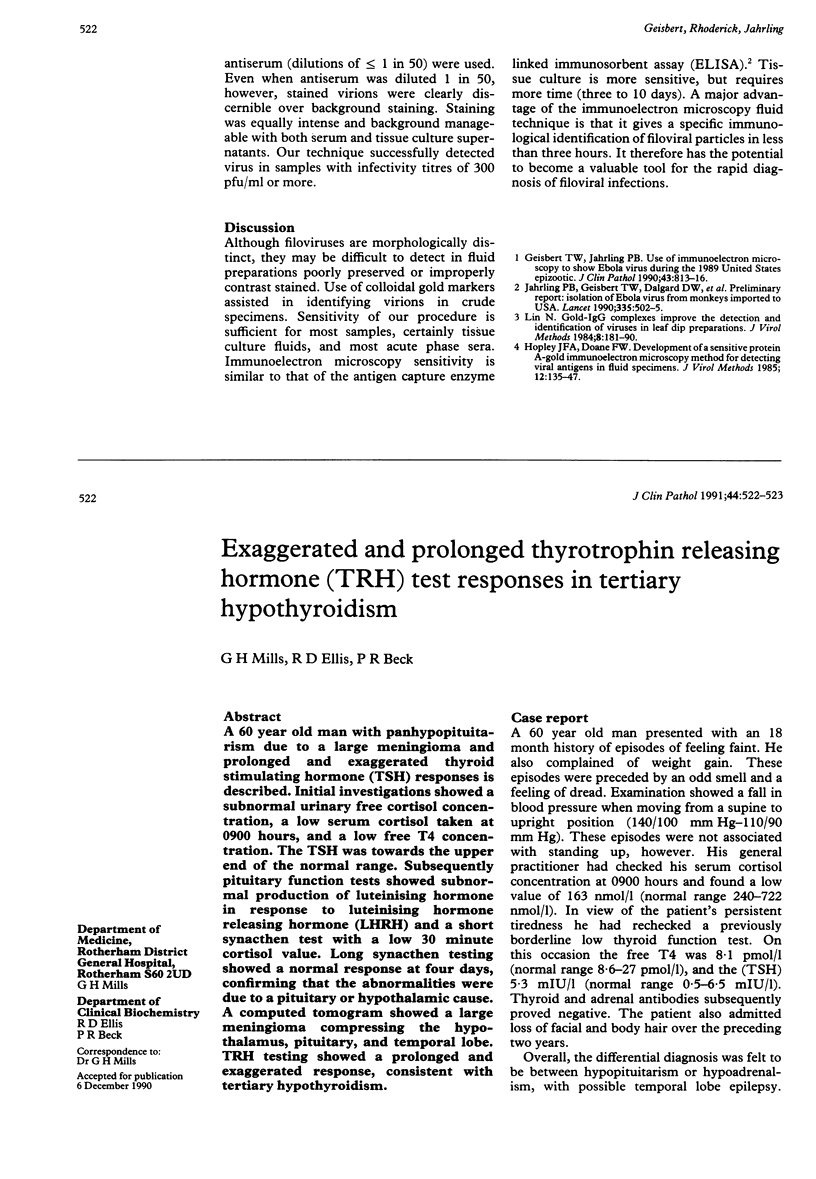Abstract
Recent filoviral outbreaks in animal primates have raised public awareness of the potential for filoviruses to become a public health concern; methods that efficiently identify these viruses are therefore of high priority. An indirect immunoelectron microscopy method, which uses homologous guinea pig polyclonal antiserum, successfully identified Ebola-related (Reston) virus particles in serum and tissue culture fluid specimens with infectivity titres of 300 plaque forming units (pfu) per ml or more. The sensitivity of this procedure is sufficient to show virus in most acute phase sera, and is equal to that of the antigen capture enzyme linked immunosorbent assay (ELISA). The immunoelectron microscopy fluid technique can differentiate among antigenically distinct filoviruses in less than three hours. It should be valuable in the rapid diagnosis of potential filoviral infections.
Full text
PDF

Images in this article
Selected References
These references are in PubMed. This may not be the complete list of references from this article.
- Geisbert T. W., Jahrling P. B. Use of immunoelectron microscopy to show Ebola virus during the 1989 United States epizootic. J Clin Pathol. 1990 Oct;43(10):813–816. doi: 10.1136/jcp.43.10.813. [DOI] [PMC free article] [PubMed] [Google Scholar]
- Hopley J. F., Doane F. W. Development of a sensitive protein A-gold immunoelectron microscopy method for detecting viral antigens in fluid specimens. J Virol Methods. 1985 Oct;12(1-2):135–147. doi: 10.1016/0166-0934(85)90014-x. [DOI] [PubMed] [Google Scholar]
- Jahrling P. B., Geisbert T. W., Dalgard D. W., Johnson E. D., Ksiazek T. G., Hall W. C., Peters C. J. Preliminary report: isolation of Ebola virus from monkeys imported to USA. Lancet. 1990 Mar 3;335(8688):502–505. doi: 10.1016/0140-6736(90)90737-p. [DOI] [PubMed] [Google Scholar]
- Lin N. S. Gold-IgG complexes improve the detection and identification of viruses in leaf dip preparations. J Virol Methods. 1984 May;8(3):181–190. doi: 10.1016/0166-0934(84)90012-0. [DOI] [PubMed] [Google Scholar]



